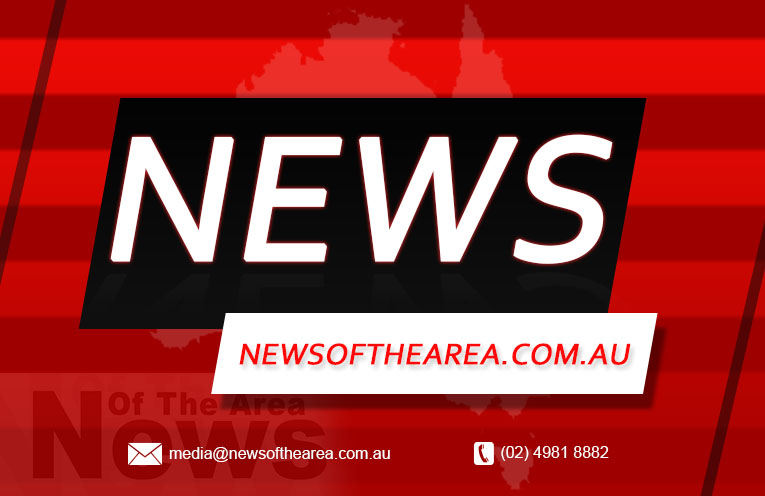COMMUNITIES from Wamberal to Hawks Nest came together last week to discuss the potential opportunities and impacts arising from a Federal Government proposal to create an offshore electricity area off the Hunter coast.
Minister for Climate Change and Energy Chris Bowen has proposed an area in the Commonwealth waters off the Hunter region of NSW for offshore renewable energy projects, such as offshore wind.
 Advertise with News of The Area today.
Advertise with News of The Area today.It’s worth it for your business.
Message us.
Phone us – (02) 4981 8882.
Email us – media@newsofthearea.com.au
The Australian Government says it is looking to harness renewable energy resources to help decarbonise the economy with year-round clean energy generation; hoping this will reduce emissions and boost the share of renewables in the electricity grid.
The Hunter region has been deemed well suited for offshore wind projects due to the presence of strong, consistent wind, and its proximity to areas of high electricity demand and existing connections to the grid.
Industry has expressed high levels of interest in developing projects in the area, and coal-fired power stations in the Hunter including Lidell, Eraring and Bayswater are planning to shut down in future years.
The area also sits within the New South Wales (NSW) Government’s proposed Hunter-Central Coast Renewable Energy Zone (REZ).
Last week, seven community information sessions were held across the region, attended by staff from the Department of Climate Change, Energy, the Environment and Water’s Offshore Renewable Energy Team and EnergyCo from the NSW Government.
“The sessions are conducted to talk through the commonwealth process, how it fits into the broader offshore renewable energy framework, answer any questions about the area proposed for offshore renewable energy activities, and encourage the community to put in a submission about their views on the proposal,” a spokesperson for the Department told News Of The Area.
“Points raised by the community included environmental, recreational and visual amenity and onshore transmission, the need for more affordable energy and what benefits will there be for the community and region with any future projects.”
Have your say on the Federal Government’s proposal by Aprl 28 at https://consult.dcceew.gov.au/oei-hunter/have-your-say.
What happens next?
If the Minister declares the area, and feasibility licences are granted, developers will be allowed to investigate an area and begin planning their project.
During the feasibility licence period, which is up to seven years, developers must prepare a management plan.
As part of the preparation of these plans, developers will need to consult with the local community and demonstrate how they will share the area with other users.
Licence holders (developers) will also need to have a plan for gathering and responding to ongoing feedback from stakeholders throughout the life of the project.
The management plan must be approved by the Offshore Infrastructure Regulator before an application for a commercial licence can be granted.
Before deciding whether to grant a commercial licence, the Minister may require the developer to conduct specific kinds of consultation.
Developers must also ensure they have received all other relevant approvals, and undertake any other consultation processes, before they can apply for a commercial licence.
This includes environmental approvals.
It is not until a commercial licence is granted, which is for a period of 40 years, that construction of the offshore renewable energy infrastructure can commence.
Greens show cautious support
With the proposal announced and community consultation underway, political candidates have been quick to voice their opinions, with the issue set to be a key talking point in the lead up to the state election.
Jordan Jensen, who will contest the seat of Port Stephens for the Greens on March 25, cautiously welcomed the proposal.
“Appropriately researched and developed wind farms off our coast provide a very real opportunity for Australia to escape the stranglehold of oil and gas dependency and springboard us into being world leaders in renewable energy development,” Mr Jensen said.
“Unlike drilling for more oil and gas, harnessing the wind for renewable energy is essential for us to deal with the climate emergency.”
Mr Jensen was positive about the proposal’s potential to create new jobs in the region, but stressed that the environmental impacts need to be carefully managed.
“There are a range of important issues to be addressed, including the effect on whale movements and other aspects of the marine environment, the visual impact particularly from the Tomaree National Park, and other implications and opportunities for the many small businesses in our tourism industry.”
Projects in motion
Just days after Minister for Climate Change and Energy Chris Bowen’s original announcement of the consultation period for the offshore wind zone, BlueFloat Energy, a Spanish offshore wind developer, announced plans for a Hunter-based project, known as the ‘Eastern Rise Offshore Wind Project’.
Nick Sankey, BlueFloat Energy’s Country Manager, stated that the decision to develop a new project in the region was based on a combination of factors, including the Hunter’s history of industrial development and power generation, the quality of the wind resource, the advantageous positioning near emerging energy infrastructure and BlueFloat Energy’s positive stakeholder and community engagement to date.
“BlueFloat Energy is extremely excited about the latest addition to our growing list of offshore wind projects in Australia. Minister Bowen’s announcement is positive for the whole state and Australia’s energy transition,” Mr Sankey said.
“We know local communities support regional economic opportunities and are receptive to sustainable innovation.
“We will be working closely with the local communities to ensure this project delivers economic and environmental benefits to the area and builds on the region’s long history as a leader in energy, manufacturing and maritime industries.“
The Eastern Rise Offshore Wind Project is set to be delivered over a development and construction period of seven years and will have an installed capacity of 1.725 gigawatts.
BlueFloat Energy was previously working on the very early stages of a separate project in the region, the Hunter Coast Offshore Wind Project, which is now being developed independently by Energy Estate.
By Doug CONNOR

